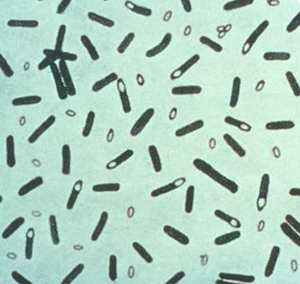First let me start by saying microorganisms include viruses, bacteria, fungi, and protozoa. Now not all of these cause disease but be very aware it is more than quite possible at some point in your life you will get some sort of infection from one of these microorganisms.
It is evidently the apparatus’ of all of our immune systems that work simultaneously keep us from getting sick in the first place. Our immune system is setup to do several things all at once. The first thing it does is rid our bodies from infectious diseases, and then it clears our bodies of the infecting agent when we do surrender from one of the earlier mentioned microorganisms.
Now keep in mind all the good our immune system does, it can also do harm us to the point of fatal results from hypersensitivity or an allergic reaction. What happens on a rare occasion is our immune system will destroy itself not knowing it has just destroyed its own autoimmune response.
Normally being able to quell diseases caused by microorganisms when your body is in such a state of confusion when your immune system is lacking certain parts whether it is from some sort of inherited defect or an acquired deficit from a different cause such as an immune deficiency disease, your body cannot help it and turns against itself.
In order for a microorganism to cause a disease, it must do several things. A few of these several things include gain access to the body an d to susceptible tissue, resist the body’s defenses, obtain the nutrients essential to its survival, reproduce, and damage the body tissues.
Each of the different types of microorganisms has specific characteristics that determine its survival in the body and the type of infection it produces. Next up are the major groups of microorganisms and the factors that enable them to cause disease.
I chose bacteria first on the list because of its unique way of life. It is a one celled microorganism, most are free living in soil or water while other require organisms on which to grow we know these as parasites.
The parasites are horrible; they must overcome the body’s defense. Our first line of defense is known as Phagocytosis, there job so to speak is to engulf, kill, and digest all invaders.
However, there is a small glitch in this process bacteria such as Streptococcus pneumoniae, Haemophilus influenzae, and Klebsiella pneumoniae which cause respiratory tract infections as well as in other parts of the your body, have capsules external to the bacterial cell well that resist the destructiveness of the phagocytes.
Actually, some bacteria release this chemical that kill phagocytes and other blood cells before it can even kill the bacteria.
Therefore, as you can see, how destructive and possibly fatal bacteria can be and we have not even discussed the other three microorganisms. Just a few other things I would like to mention within this category is that most of the bacteria that form endotoxins are normally inhabitants of the intestinal tract.
What this means is you could get members of the family such as Salmonella, Escherichia, Shigella, and Neisseria. The disease symptoms caused by these are fever, severe diarrhea, vomiting, abdominal pain, weakness, and damage to the circulatory system leading to a drop in blood pressure and, in severe cases, possible shock and finally death.
Next microorganism up for an explanation is fungi. It is a group of organisms that include the familiar macroscopic mushrooms, the blue-green mold on rotting fruit, the grey-white mold on jam, and microscopic forms such as the yeast used in the baking and brewing.
Just to ease your mind a bit fungal infections happen quite a bit less than infections by other bacteria and viruses. Fungal infections are caused by only about fifty percent of the thousands of known fungal species, These fungal infections are transmittable primarily through nature such as a ringworm of the scalp for example.
Moving on to the third microorganism which happens to be the viruses. Viruses are bad because of a multitude of reasons one being they cannot be seen even under the most powerful light microscope. However, they can be visualized in an electron microscope which should tell you some you something.
Viruses are non-cellular and can survive and multiply only within a living cell. Viruses can be very deadly for a multitude of reasons.
Disease symptoms result from the action of the viruses on the host of the cell, the effect of chemicals released by the body’s immune response to the presence of the virus, and, in cases such as measles and herpes virus infections where a rash appears, a hypersensitivity response of the body.
Here’s the kicker because viruses must live inside of the cells you cannot kill them with out also killing the host cell. Which is the reason antibiotics are useless against combating a viral infection.
Last but not least of the four microorganisms the protozoa. Protozoa are actually more like microscopic animals. They are singled-celled. Out of all of the microorganisms they have more complex structures and life cycles. Protozoa are found in soil and water on dead organic matter or bacteria.
Protozoa are also very serious and can be just as deadly as viruses. The particular diseases caused by protozoa are frequently found in tropical or subtropical countries and are often the product of un sanitary living conditions, especially in the underdeveloped areas of the world.
A few of these diseases are Sarcodina, Mastigophora, Cliphora, and Sporozoa which are named for their life cycles and mode of locomotion.
Sources sited: American society microbiology, Lynnette e. h., balows a., hausler w. j. jr., and shadowy h. j., eds.



